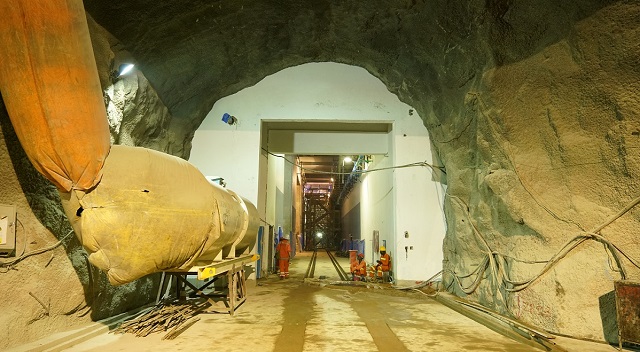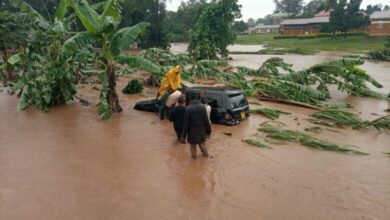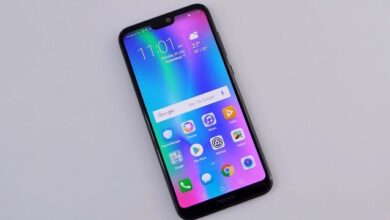
By Guest Writer
Opinion: It is noted that between 30 November to 12 December 2023, Dubai, United Arab Emirates (UAE) will be hosting UN Climate Change Conference (COP28) which is due to be attended by 167 world leaders, including the Pope and King Charles III and have four paradigm shifts which the conference will focus on and the energy transition and slashing emissions before 2023 is one of them.
And this is one of the targets of reducing greenhouse gas emissions 1.5°C by 2030 and power inefficiency as stipulated under the Paris Agreement. So as Dubai hosts the COP28 conference, the participants must ensure that the energy challenges are addressed which the climate summit conference failed to work on.
At the Africa Climate Summit, 2023 held in Nairobi in September 2023, energy efficiency was highlighted as a cost-effective solution to expand energy access across the continent. During a high-level event on energy efficiency, African Union Commissioner for Infrastructure and Energy H.E. Dr Amani Abou-zeid noted that energy efficiency is the cleanest form of energy available and added that transmission losses due to inadequate energy infrastructure are a major contributor to the electricity access deficit in Africa however from the summit, nothing was done and most people are still facing energy inefficiency in different African countries most especially in Uganda.
According to the new report by the International Energy Agency (IEA), it indicates that electricity grids are ‘weak link’ in clean energy transition and the Enerdata shows that the global final energy consumption is projected to increase from the 19% in 2021 to 31% in 2040 under a considered sustainable development scenario.
The report shows that achieving all national climate and energy goals will require adding or replacing 80mn km of power lines by 2040, an amount equal to the entire existing global grid according to a country by country analysis carried out in the report.
Additionally, it is noted that the Africa’s sprawling cities have erratic supplies of electricity but large swaths of the continent’s rural areas have no power at all. In 2021, 43% of Africans, about 600 million people lacked access to electricity with 590 million of them in sub-Saharan Africa.
And as of 2020, more than 18 million Ugandans (58% of the total population) continue to live without access to electricity (ESMAP) limiting the country’s potential for economic growth and human development. Power shortages remain the biggest challenge in Africa’s electricity sector year after year considering that over half of the population live below the poverty line.
All this shows that the power supply system remains inadequate, faulty and inefficient in Africa most especially in Uganda due to stunted growth in generation capacity, poor transmission and delivery, distribution infrastructure and poor commercial utility practices which needs to be addressed.
Last week on November 20,2023 the media reported that power blackouts in Eastern region Uganda have reached an alarming level in the recent months affecting every facet of life forcing businesses to rely on generators which are relatively expensive and leave those who cannot afford generators quit businesses and become jobless. It is said the cause of the power black outs is system breakdowns due to natural hazards, an aging electricity infrastructure, electricity thefts, vandalism of transmission and distribution infrastructure which needs to be tackled.
In 2016, the same issue of power outage happened in Gulu district when Lalogi a trading centre with a population of roughly 1,300 in Northern Uganda was electrified through the national grid, people were very excited living in near trading centres and Godfrey was among those who seized the productive potential of electricity not long after the grid’s arrival and managed to started up a welding workshop selling metals that he manufactured himself.
He noted that his business depended on a regular supply of electricity and it was unfortunate for him when the electric grid began to show signs of unreliability only six months after the first connections were made. From then on, frequent and prolonged power outages became the standard for Lalogi’s electricity consumers, especially business people.
This means that if the government does not provide an alternative energy source to use that is stable, cheap and accessible, people are going to continue suffering with power outages, expensive connections, electrocutions and the high tariffs imposed on electricity which some people cannot afford, especially the vulnerable.
According to the energy data, the electricity accounts for only 2% of the total final energy consumption with biomass and fossil fuels accounting for 88% shows that electricity in Uganda could either be inadequate, inaccessible, unreliable, unaffordable or a socially un preferable form of energy even though the government receives increasingly positive ratings of its performance on providing reliable electricity, probably attributable to its policies and programs designed to improve access to electricity.
These findings point to the need to address implementation challenges of existing electricity access plans and policies in order to accelerate the pace of gains in access to bridge the supply-demand gap and provide energy alternatives to use for people that are stable, reliable and cheap to avoid power outages.
However much goal 7 of the UN general assembly on Sustainable Development Goals adopted in September 2015 requires countries to ensure access to affordable, reliable, sustainable and modern energy for all by 2030, the government’s efforts have largely continued to focus on increasing energy access by increasing supply through investing in hydro-electricity plants which people cannot afford and this has made Uganda continue to fail at its commitment to long term plans for a transition to decarbonised economies and increasing access to clean, affordable and reliable energy
This goal comes at a time when Uganda, like the rest of the developing world, is experiencing rapid urbanization and a radical shift from wood fuels to charcoal consumption. Data from the ministry of energy indicates that urban centers consume about 1.8 million tons of charcoal annually, and the exclusivity of wood fuel use in rural areas, among other reasons, makes Uganda lose more than 90,000 hectares of trees annually, with only 7000 hectares replenished.
The report indicates that biomass and fossil fuel energy demand may hit 135 tons by 2040, up from the current 44 million tons. The country will then run out of energy sources in the next few years because of population pressure.
Even though the government’s strategy to increase power generation and supply exists, Uganda still experiences a lot of energy challenges, like regular power outages and a lack of safe, low-carbon, and cheap large-scale energy alternatives to fossil fuels.
Uganda has one of the lowest electrification rates in the world, bringing electricity to more than 40 million people. Despite the significant efforts over the last 20 years, the rate has remained low, around 24%. However, the government is trying many approaches, including establishing monopolies in the transmission and distribution sectors in some areas, and most of these approaches have failed to deliver electricity to the majority of Ugandans. This all shows that Ugandans still face a lot of challenges in the energy sector that need to be addressed in the coming COP28 conference.
Therefore, the COP28 conference participants must look into considering energy alternatives like renewable energy, which is affordable, reliable, and cheaper for both urban and rural populations to use and does not contribute to methane release via fugitive gas emissions, which causes climate change and degrades our environment.
The government must ensure a strong energy infrastructure to drive the energy transition by prioritizing investment in renewable energy sources, promoting innovation in energy technology, fostering international cooperation for infrastructure development, and incentivizing the transition to cleaner and more efficient power distribution systems.
For the country to succeed in addressing energy challenges and achieve goal 7, which is among the SDG targets of 2030, It must ensure increasing efficiency of energy production, distribution, and consumption as a win-win that will boost development while mitigating climate change impacts and improving people’s standards of living. Additionally, involving policy frameworks, financial support, and collaborative efforts among nations and private sectors to improve energy infrastructure resilience and sustainability is crucial.
The author is Olive Atuhaire, Research Associate.
Disclaimer: As UG Reports Media LTD, we welcome any opinion from anyone if it’s constructive for the development of Uganda. All the expressions and opinions in this write-up are not those of UG Reports Media Ltd. but of the author of the article.
Would you like to share your opinion with us? Please send it to this email: theugreports@gmail.com.





